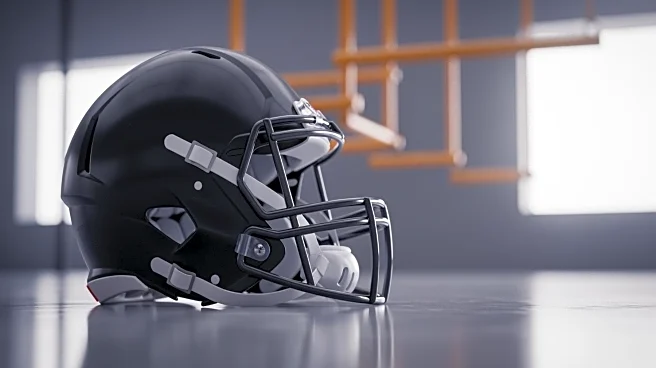What's Happening?
Justin Herbert, quarterback for the Los Angeles Chargers, is experiencing a career-high in rushing yards this season, averaging 26.6 yards per game. This increase is largely due to the team's injury-plagued
offensive line, which has forced Herbert to rely more on his mobility. The Chargers' offensive line has been significantly weakened by injuries to key players, including Rashawn Slater and Joe Alt, leading to increased pressure on Herbert during games. As a result, Herbert has been scrambling more frequently, a strategy encouraged by his coaches to maintain offensive momentum. His ability to run has become a crucial component of the Chargers' game plan, especially in high-pressure situations.
Why It's Important?
Herbert's increased rushing ability is vital for the Chargers as they navigate a challenging season with a compromised offensive line. His mobility not only helps in gaining crucial first downs but also forces opposing defenses to adjust their strategies, potentially opening up opportunities for other offensive plays. This shift in Herbert's playing style underscores the importance of adaptability in professional sports, particularly when faced with unforeseen challenges such as player injuries. The Chargers' reliance on Herbert's running ability highlights the broader impact of player versatility in maintaining competitive performance in the NFL.
What's Next?
The Chargers will continue to depend on Herbert's mobility as they face upcoming opponents, including the Minnesota Vikings. The coaching staff is likely to further integrate Herbert's rushing into their offensive strategy, while also seeking ways to bolster the offensive line to reduce pressure on the quarterback. Monitoring Herbert's health and managing the physical demands of increased rushing will be crucial to ensure his sustained performance throughout the season. The team's ability to adapt to these challenges will be pivotal in their pursuit of a successful season.
Beyond the Headlines
Herbert's situation highlights the broader issue of player safety and the physical toll of increased rushing on quarterbacks. As teams increasingly rely on quarterbacks' mobility, there may be a need for enhanced protective measures and strategic planning to mitigate injury risks. This development could influence future training and conditioning programs, emphasizing the importance of balancing physical demands with player longevity.












